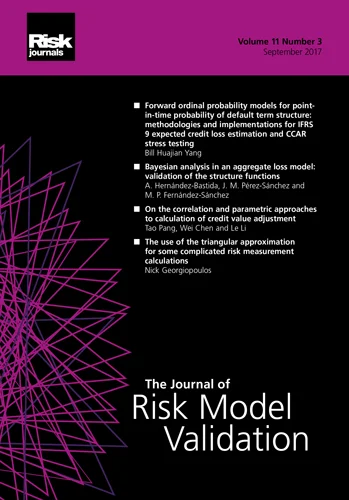Journal of Risk
ISSN:
1465-1211 (print)
1755-2842 (online)
Editor-in-chief: Farid AitSahlia

Market efficiency and volatility within and across cryptocurrency benchmark indexes
Need to know
- Benchmark index tracking as a price discovery mechanism and additional portfolio diversification tool is currently emerging in the cryptocurrency literature (Trimborn and Hardle 2018; Liu and Tsyvinski 2021). We show results for a set of four empirical anomalies widely found in financial returns (namely, risk premium, leverage, regime switch and calendar effects) for 57 cryptocurrencies and seven benchmark (market cap) indexes, which we construct.
- Algorithmic stablecoins exhibit low volatility clustering. The interesting implication is that stable tokens are more vulnerable to market inefficiency, which is unexpected since they are backed by a legal entity ensuring the convertibility of tokens to fiat currency.
- Our finding in support of the existence and persistence of two states (high/low volatility and negative/positive returns) is in line with current literature that uses alternative methods and a smaller sample size (Caporale et al 2018).
- The hypothesis of a Monday effect is rejected for most cryptoassets, while most market cap benchmark indexes exhibit positive excess returns going toward the end of the week, especially on Friday and during the weekend.
Abstract
With initial coin offerings and token offerings remaining at the forefront of alternative investments, the study of peer groups can be important for comparing investors’ tastes and preferences for particular classes of cryptocurrency on a more equal footing. The aim of this paper is to identify violations of the weak-form market efficiency hypothesis for comparable cryptoassets that are conditional on market segmentation and those conditional on benchmarks. We use daily frequency data of 57 cryptocurrencies that account for more than 90% of the total market capitalization (market cap). We construct seven thematic market cap indexes that are able to represent the whole cryptocurrency universe. Against this background, we test for the presence of four empirical anomalies: risk premium, leverage, regime switch and calendar effects, both across and within these benchmark indexes. The main results support the existence of a switch between two states and positive excess returns toward the end of the week for both cases. Our methodology and findings contribute to the emerging literature on introducing active and passive portfolio management strategies that track benchmark crypto indexes.
Copyright Infopro Digital Limited. All rights reserved.
As outlined in our terms and conditions, https://www.infopro-digital.com/terms-and-conditions/subscriptions/ (point 2.4), printing is limited to a single copy.
If you would like to purchase additional rights please email info@risk.net
Copyright Infopro Digital Limited. All rights reserved.
You may share this content using our article tools. As outlined in our terms and conditions, https://www.infopro-digital.com/terms-and-conditions/subscriptions/ (clause 2.4), an Authorised User may only make one copy of the materials for their own personal use. You must also comply with the restrictions in clause 2.5.
If you would like to purchase additional rights please email info@risk.net








